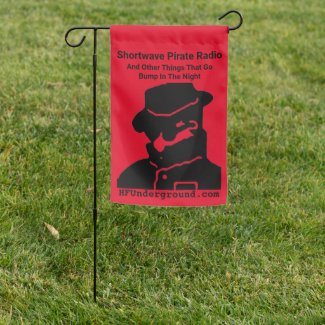Can vintage analogue / tube radios be used for SWL BCL Dxing?
Do you use one? What are they? How do they perform?
Any advantages or disadvantage for BCL/SWL DXing using one of those vintage analogue radios?
As you have seen from the responses so far, yes, absolutely, you can use a vintage or tube receiver (often called "boat anchors") for SWL BCL, or any other kind of listening, if that is what you want. And some of them can perform extremely well. If there is a major weakness it is that some older radios, especially if they were lower end sets back in the day, can be a little less sensitive above about 15 MHz.
Advantages, cool factor, sometimes sound quality, and really that is about it. There is nothing an old radio can do that a quality modern radio cannot do.
Disadvantages, many. They can be a bit less stable in frequency, they can take a long time to warm up, they can be hard to find parts for, they use way more power and can warm up a room (both a plus and a minus, depending on time of year), they often have less adjustable or more limited filtering, etc.
If it sounds like I am running down the vintage stuff...far from it, I love it. But there are things to consider if you are going to use older stuff.
Here I use a variety of older gear. The core radios in the shack are modern, various SDRs and traditional modern receivers, but I also keep a couple older radios in play all the time, and I rotate the old radios used in the shack. Today I have a Hallicrafters SX-28, Hallicrafters SX-62A, and Hallicrafters SX-71 in the shack, and an LM-18 right next to them (more on that later), a couple of months ago it was a National NC-173, Hammarlund SP600, and Hallicrafters SX-42.
I guess the main problem could be finding out what the exact freq, it is tuned to, when heard stations for the first time in languages that I don't understand.
And to go to the exact freq. to tune up for a station that I want to listen to.
I suppose a digital readout receiver could be used side by side to confirm the freq. but then it is not 100% analogue receiver at work is it? 
Another thing is that, if you want to monitor a station on the freq. let say 4055 kHz Radio Verdad from Guatemala.
Then how would you be able to ensure your analogue tube radio is tuned for that freq. spot on?
You could use a digital frequency meter on the LO or VFO of the old radio. There are many kits to do so. You are still using only the vintage radio, but you have added a digital readout to the vintage electronics. Pretty easy and it can be non-invasive, if you are careful in the implementation you can return the radio to original configuration with no sign it ever had the readout associated.
Or you can do it how we did it back in the day. Use an external, period correct, frequency meter or frequency standard.
An external fixed frequency standard can be turned on that will generate multiple signals / markers on known frequencies. They generate multiple harmonics of a given frequency, for example in the 1 MHz setting they generate a tone / marker / signal every 1 MHz (1000 kHz), so they are at 1, 2, 3, 4, 5....et MHz. In the 100 kHz setting they generate a signal every 100 kHz, so it would include things like 3500, 3600, 3700, 3800, 3900...8100...15400, kHz, etc. And in the 10 kHz setting they generate markers every 10 kHz, 3500, 3510, 3520, 3530, 3540 kHz, etc.
In your Radio Verdad example on 4055 kHz: you click the switch on the freq standard to the 1 MHz position. Even very coarsely defined frequency scales can normally allow you to get within one MHz. You tune the radio to 4000 kHz by finding the tone / signal of the freq standard. You then click switch to the 10 kHz position, tuning the radio up until you have counted 5 tones, you are now at 4050 kHz. Tune to the next tone up, now at 4060 kHz. Go back to half way between (by sound or by dial indicator) the 4050 and 4060 kHz tones and you at 4055 kHz.
It sounds bulky, but is really very easy.
My favorite way would be an external harmonic frequency meter, like the military surplus BC-221 series, or the LM-XX (multiple numbers in the XX) series like an LM-12 or LM-18. These systems can tell you the frequency of any signal you want or preset the frequency of the radio with an analog radio to under 0.1 kHz resolution.
Quite a while ago I put together a basic web page talking about these frequency meters, and how to use them:
http://www.tokenradio.net/token/BC221.htmFrom that page you will also see a link to some boatanchor dials, and why such a meter can be helpful.
T!



